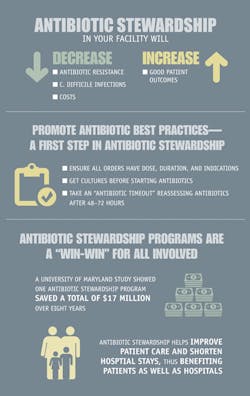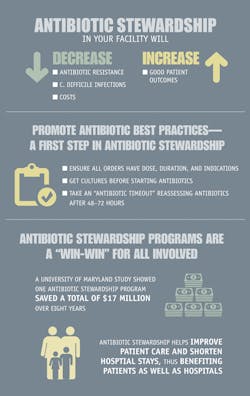One aspect of initiatives to aid antibiotic stewardship is to increase the development and use of rapid molecular diagnostic tests for identifying infections and also characterizing the presence of any resistant bacteria. Within the area of sexually transmitted infections (STIs), Mycoplasma genitalium (MG) can serve to illustrate the problems and promise of molecular diagnostic technology with regard to antibiotic resistance and stewardship.
MG is an STI that can cause symptoms including urethritis, cervicitis, and pelvic inflammatory disease. It has been largely underreported due to the difficulty of isolating and culturing the organism, as it can take months to do so. This means that molecular testing (qPCR, TMA) is the only practical method of reliably identifying MG.
Identification of the bacterium alone is no longer sufficient to guide effective treatment due to increasing macrolide resistance. However, recent advances in multiplexed molecular techniques are improving the sensitivity and selectivity of qPCR enough that detection of the organism can be peformed at the same time as detection of resistant mutations. There is now a multiplexed qPCR test for MG that can target the five mutations involved in azithromycin resistance in the 23S rRNA gene. Patients with detectable mutations at A2058 or A2059, who may fail azithromycin treatment, can be directed faster to a second-line treatment. Timely detection of antibiotic resistance will enable the development of better algorithms for the treatment of MG infection and promote responsible stewardship of antibiotics.
—Elisa Mokany, PhD
Vice President, Research and Development
SpeeDx Pty Ltd.
Provider of the M. genitalium ResistancePlus Kit
Antibiotic stewardship is one of the most critical components of reducing the incidence of superbugs across the entire healthcare continuum of care. Given the significant mortality and morbidity associated with antibiotic resistance, serious changes are necessary—most significantly, collaboration and communication across the entire clinical care team. The United States Centers for Disease Control and Prevention (CDC) has released new core elements of an antibiotic stewardship program that guide healthcare professionals and facilities in the proper steps to reduce resistance and improve antibiotic prescribing practices. Many antibiotics are also prescribed in outpatient settings, such as urgent/primary care, ambulatory surgery centers, and dental practices. The diversity of prescribers and healthcare settings requires collaboration across disciplines to include physicians, nurse practitioners, physician assistants, pharmacists, patients, and infectious disease professionals. Antibiotics are one of the most precious resources that we have in our medical arsenals and, as such, they must be treated with the utmost respect and diligence when prescribing.
—J. Hudson Garrett Jr., PhD, MSN, MPH, FNP-BC, PLNC,
VA-BC, IP-BC, CDONA, FACDONA, FAAPM
Vice President of Clinical Affairs
PDI, Inc.
Provider of Prevantics, a line of vascular infection prevention solutions
Antibiotics continue to be powerful weapons to fight infection, but inappropriate use makes the treatment of microbial infections increasingly challenging. Successful antibiotic stewardship can help mitigate the development of antimicrobial resistance and lead to better outcomes. Our organization supports The Declaration by the Pharmaceutical, Biotechnology and Diagnostics Industries on Combating Antimicrobial Resistance, which was signed by 85 companies at the World Economic Forum in January 2016. It represents a commitment to invest in a range of innovative antibiotics, vaccines, alternative technologies, and diagnostics for resistant infections.
We believe it will require a nationally coordinated effort among healthcare providers and partners to develop an effective antibiotic stewardship program. The lab will play a critical role, being uniquely positioned to provide data critical to bring key groups together, including patients, providers, policy makers, regulators, payers, and manufacturers.
Where do manufacturers fit into this effort? One area is the development of state-of-the-art testing with high medical value. Some examples include procalcitonin, molecular markers of resistance, and rapid real-time polymerase chain reaction (PCR) testing at the point of care that delivers highly accurate results for flu, strep, respiratory syncytial virus (RSV), and more while the patient is still in the office. Providing greater certainty about whether antibiotics are needed and, if they are, ensuring the right antibiotic is delivered will lead to more appropriate antibiotic use and potentially slow the development of antimicrobial resistance.
—Alan Wright, MD, MPH
Chief Medical Officer
Roche Diagnostics
Provider of the cobas Liat PCR System for use at the point of care


